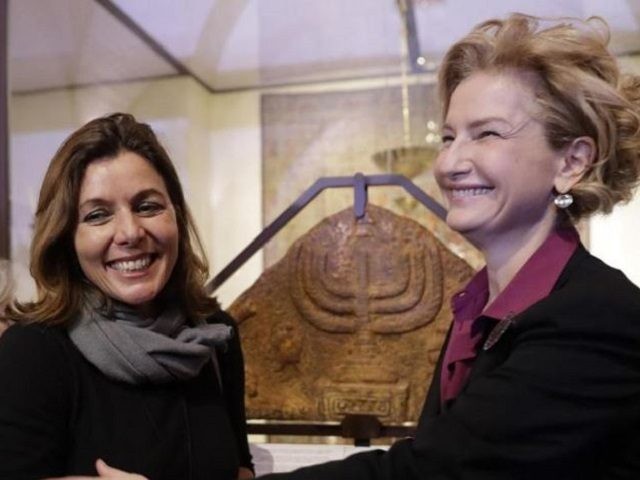In a new step forward in Jewish-Catholic relations, the Vatican Museums and the Rome Jewish Museum have announced a historic joint exhibition on the menorah.
The works of art—comprising paintings, sculpture, engravings, illustrations, and literature—will showcase the seven-armed candelabra that has become the universal symbol of Judaism as well as of the relations between the Christian and Jewish faiths.
The exhibit took three and a half years to prepare and will run from May 15 – July 23. The show will be divided equally between the Rome Jewish Museum and the Vatican Museums, with some 130 works of art hosted by the Jewish Museum and a similar number displayed in the Charlemagne wing of the Vatican.
Barbara Jatta, director of the Vatican Museums, and Alessandra Di Castro, director of the Rome Jewish museum, presented the new joint endeavor this week, flanked by notables from the Jewish and Catholic communities of Rome. Present were Dr. Riccardo Di Segni, Chief Rabbi of Rome, Ruth Dureghello, President of the Rome Jewish Community, Cardinal Kurt Koch, President of the Pontifical Commission for Religious Relations with Jews and Cardinal Giuseppe Bertello, President of Vatican City State.
According to the biblical book of Exodus, Moses constructed the original Menorah out of pure beaten gold, following the Lord’s instructions. The menorah—either the original or a copy—was confiscated by the victorious Roman legions and brought to Rome in 70 A.D. along with other spoils of war, following Rome’s conquest of Jerusalem. It vanished forever during the Sack of Rome in 455.
The Menorah is highly symbolic and evokes the common roots of Judaism and Christianity.
According to the curators of the exhibit, in imperial Rome the Menorah became the definitive symbol of Judaism at the same time that Christian symbols took shape.
The menorah became “the emblem of Judaism, tangible evocation of divine light, of cosmic order in the creation of the ancient covenant, symbol of the burning bush, of the tree of life, or testimony of the Biblical Sabbath,” they said. “It can be found in Jewish catacombs, sarcophaguses, tombstones, graffiti, coins, glass decorations in gold, trinkets and jewels, and of course, synagogues etc.”
At the same time, the menorah also inspired Christian religious art used for liturgies in many churches. An immense menorah adorns the Duomo of Milan, as well as others on display in the Sanctuary of Mentorella and the cathedrals of Prato and Pistoia.
Follow Thomas D. Williams on Twitter Follow @tdwilliamsrome

COMMENTS
Please let us know if you're having issues with commenting.